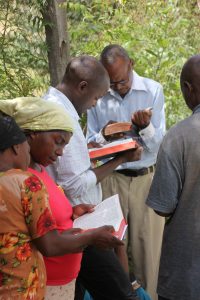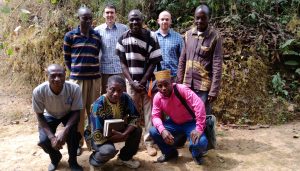Situated on the Atlantic coast, The Gambia is surrounded on the other three sides by the former French colony of Senegal. The River Gambia, which meanders for 300 miles along the length of the country, divides it into two roughly equal parts known as North and South Bank Division. One of the smallest states of Africa, it became an independent republic in 1965. Some 20% of the land is mangrove swamp and the remainder is equally divided between woodland and grassland. An estimated 70% of the working population are employed in agriculture, the bulk of which are subsistence farmers struggling to feed their own families. The most important crops are groundnut, peanut, millet and rice.
Population: 2 million.
Language: English, 7 native languages.
Main religion: Muslim.
Link man Michael Green
Correspondence team leader – contact link man
CBM activities There are twice-yearly visits from the UK.
Ecclesias Farafenni, Latri Kunda (about 30 members in total)



